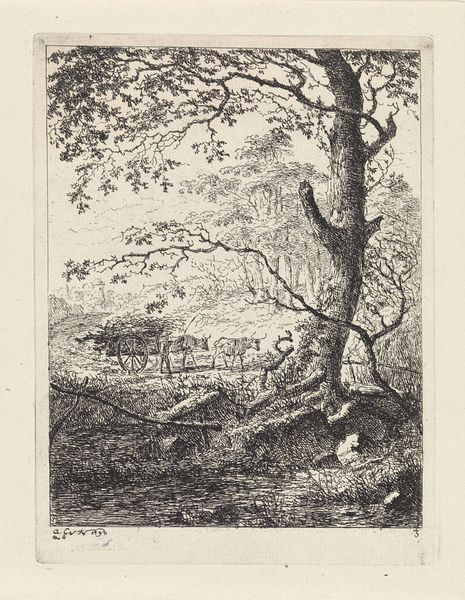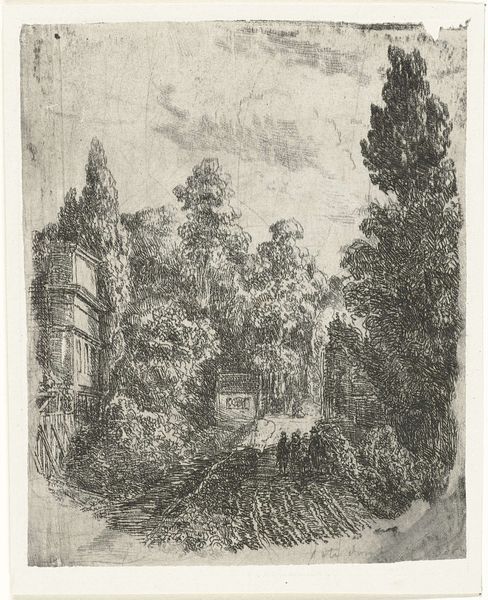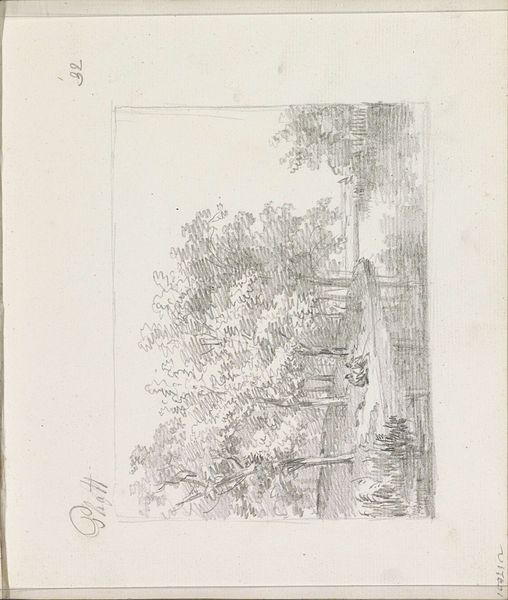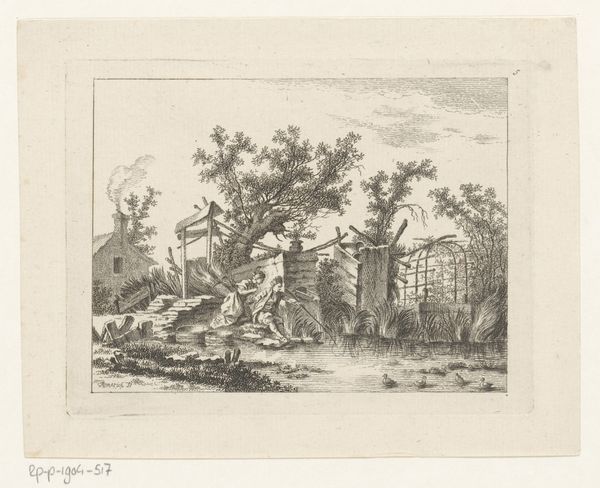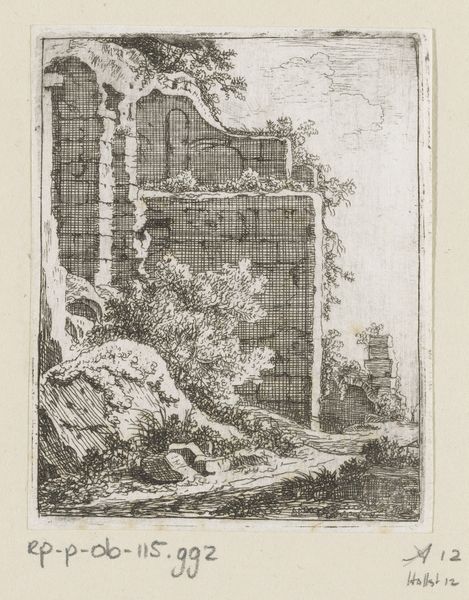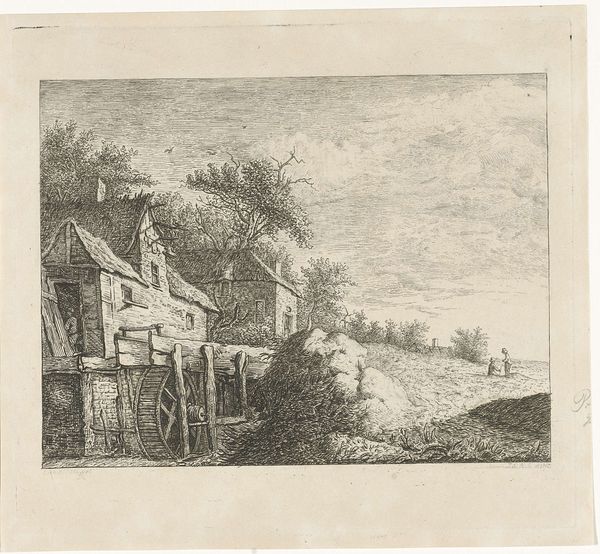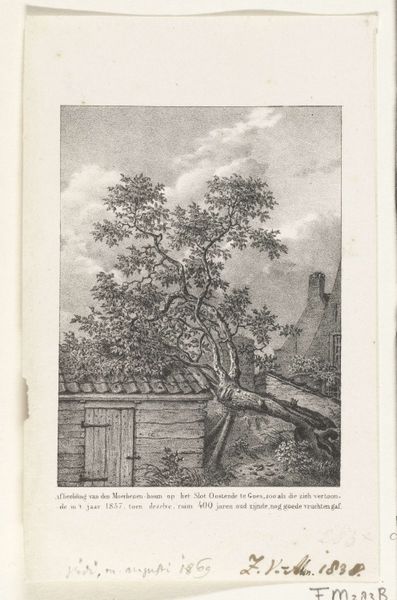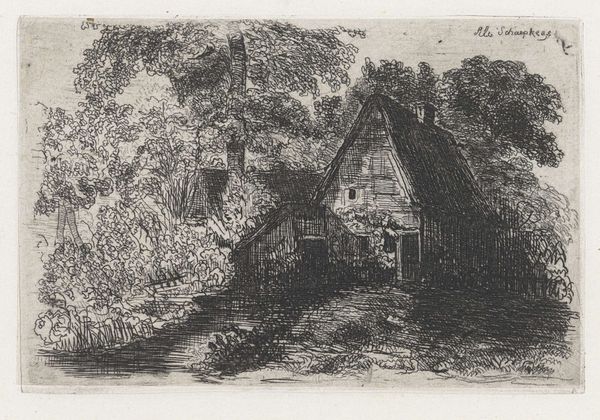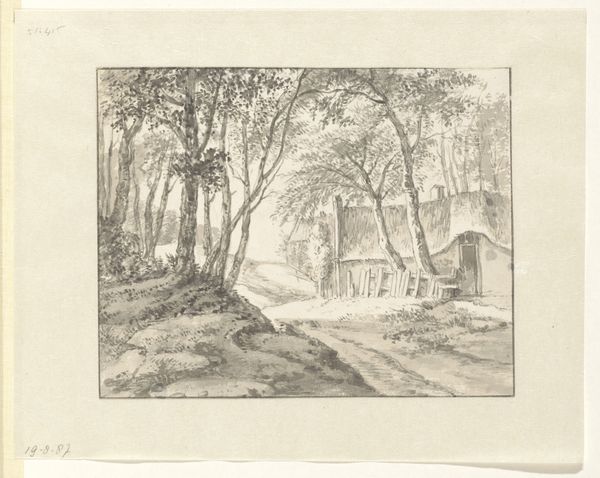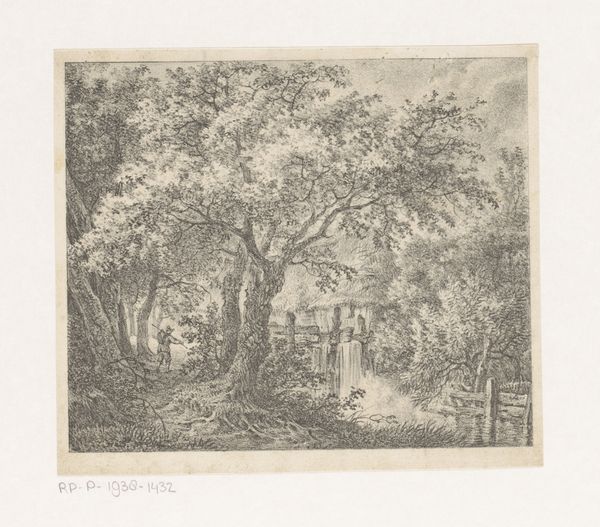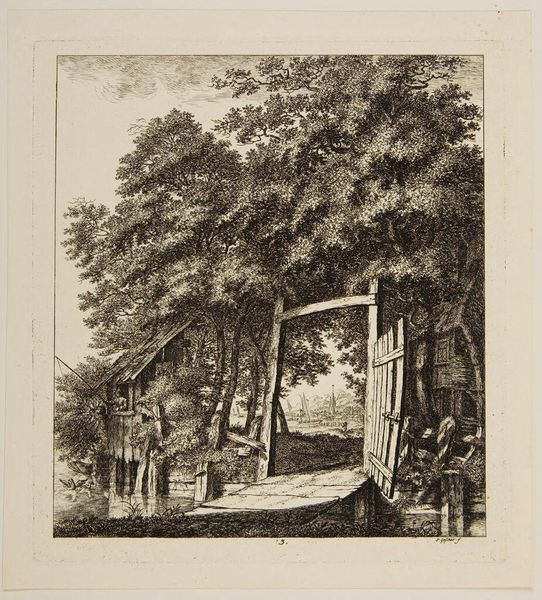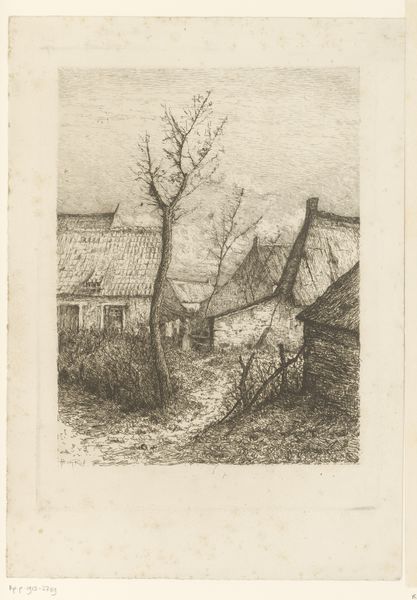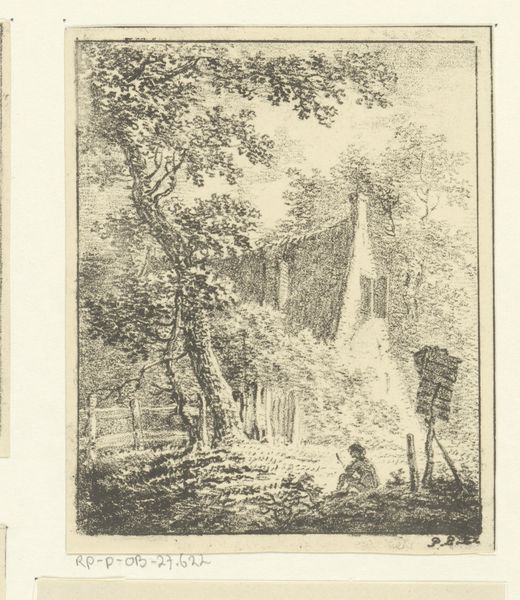
drawing, ink
#
drawing
#
landscape
#
ink
#
romanticism
Dimensions: height 198 mm, width 151 mm
Copyright: Rijks Museum: Open Domain
Gerard van Nijmegen made this etching, 'Watermolen', in the Netherlands, sometime in the late 18th century. The image shows a watermill nestled in a verdant landscape, where the industry of the mill integrates seamlessly into the natural world. As a common feature of the Dutch landscape, the watermill also carried a lot of cultural weight. It was a symbol of Dutch ingenuity in water management, as well as of a certain bucolic ideal, linking the country to its agricultural roots. The two figures who stand, admiring the view, reflect an aristocratic interest in picturesque landscapes. Etchings like this circulated as prints, feeding a growing market for landscape imagery and contributing to the development of Dutch national identity. Understanding the full meaning of this image involves exploring the economic structures of the Dutch Republic, the relationship between city and countryside, and the rise of landscape art as a distinct genre. These are the kinds of historical resources that help us see art as something deeply embedded in its time.
Comments
No comments
Be the first to comment and join the conversation on the ultimate creative platform.
